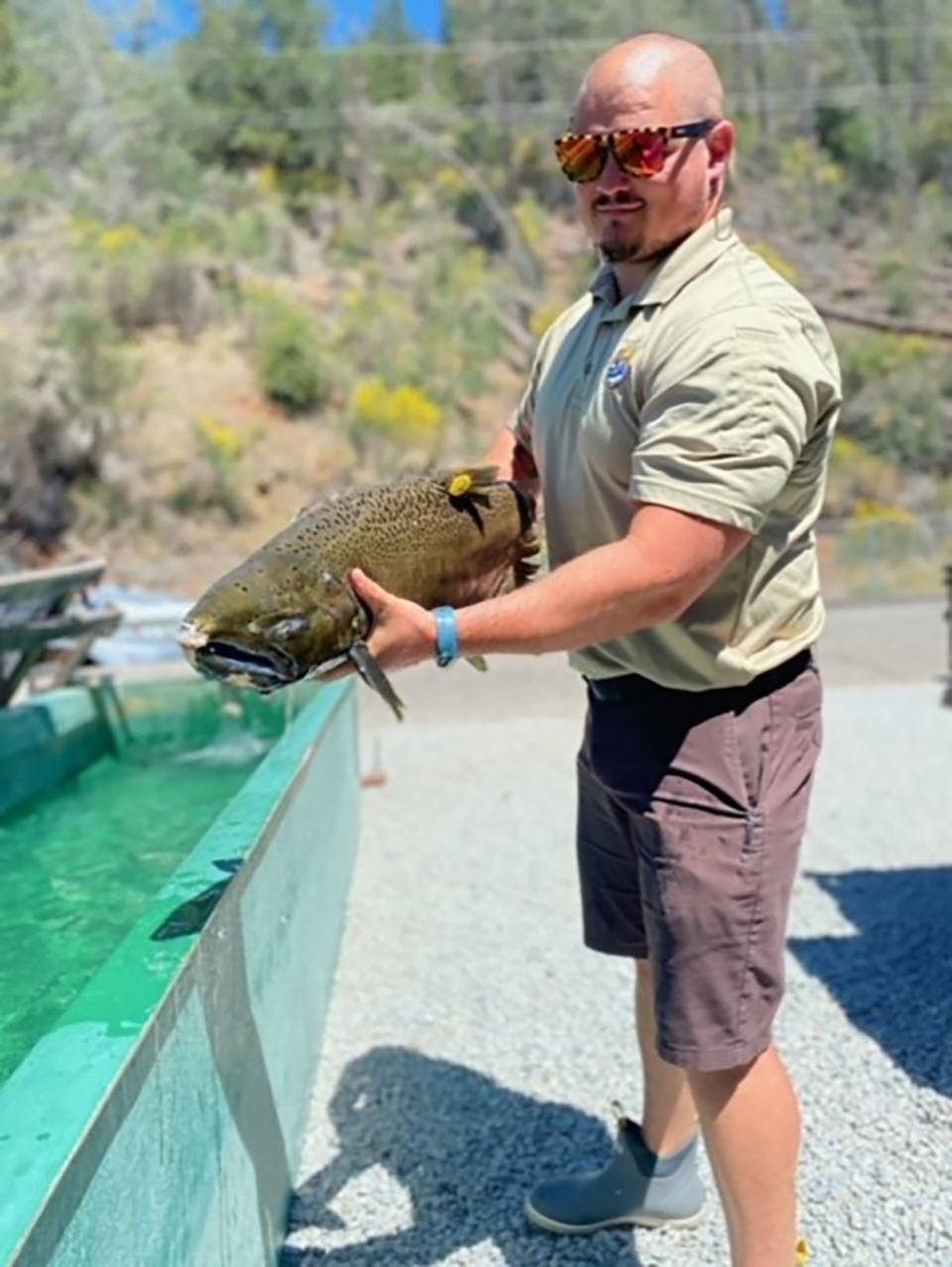Record low number of winter chinook baby salmon reported at Sacramento River's Red Bluff

RED BLUFF — A record low number of endangered winter-run Chinook salmon fry migrated downriver from Redding to Red Bluff on the Sacramento River this year, according to preliminary data collected by the U.S. Fish and Wildlife Service (USFWS) at Red Bluff Diversion Dam.
An estimated 158,764 fry (baby salmon) have made it from below Keswick Dam to Red Bluff this drought year, compared to an average number of 1.3 million winter Chinook salmon. This is the second consecutive year that the service reported alarmingly low numbers of Chinooks.
Last year, an estimated 557,652 winter Chinook made it downriver to Red Bluff, a year when low, warm water, spurred by water diversions to irrigators, caused massive mortality in the fry.
These numbers contrast with 2020, when 2.08 million fish made it to Red Bluff and 2019 when 3.67 million made it to the dam site.
The record low number this year is attributable to two factors, according to Michael Milstein, public affairs officer for NOAA Fisheries.
First, less adult Chinooks showed up to spawn in the river this year than last year, with 1,656 showing as of Oct. 26, 2022, according to CDFW data.
Second, many of the fish suffered from a thiamine deficiency, due to a heavy diet of anchovies. This deficiency causes the fish to swim in circles and corkscrew patterns before dying,
“The number of anchovies off the coast has been booming for five years,” said Milstein. “They dominated the forage fish assembly that salmon eat. Anchovies have an enzyme that breaks down thiamine, which is important to the development of juvenile offspring.”
While treatment of the winter Chinooks at the Livingston Stone National Fish Hatchery for thiamine deficiency can restore the health of affected fish, the fishery managers currently don’t have a way to treat fish spawning naturally in the river.
“The water conditions were much better in terms of temperature this year, with more water in the river and the air temperature lower than the models forecasted,” Milstein noted. “The water temperature threshold is 53.6 degrees F for survival. Generally, the temperature was a few degrees below that this year.”
He said the irrigators took reduced allocations of water this year, resulting in increased water in the river: “The water temperature was just cold enough to keep more than 80 percent of eggs alive,” he stated.
Spawner escapement of Sacramento winter Chinook salmon in 2021 was estimated to be 10,225 adults and 281 jacks (two-year-olds). Only 2.6% of the juvenile salmon that emerged from the nests after the adult fish spawned survived in the warm water conditions, according to a CDFW report.
More from Dan Bacher:Time to fish for crab and rockfish off Bay Area coast
This July, the Winnemem Wintu Tribe, the California Department of Fish and Wildlife, NOAA Fisheries and the U.S. Fish and Wildlife Service celebrated the return of winter-run Chinook salmon eggs to the cold, glacial-fed waters of the McCloud River for the first time in 80 years in an experiment.
Meanwhile, the staff at Central Valley hatcheries have completed or are close to completing the spawning of salmon this season.
Mokelumne River: The salmon spawning season is near its end on the Mokelumne River. The Mokelumne River Hatchery took better numbers of fall-run Chinooks at the facility this year than they did last season, but it was still far from the modern record of more than 19,900 fall-run Chinook that returned to the river in 2017.
A total of 5,534 salmon have gone over Woodbridge Dam to date, according to Bill Smith, Mokelumne River Fish Hatchery manager. 7.4 million eggs are now on hand. The hatchery’s production goal is 7.5 million eggs and 6.4 million salmon smolts,
“We’re just below average on the fall run and we have one more spawn to do. We took in a lot of fish in the upper twenties this season, the same big fish that anglers saw on the ocean this year,” said Smith. Information: (209) 759-3383.
American River: The salmon ladder at the Nimbus Fish Hatchery opened on Oct. 31. Since then, the facility has taken 9.8 million eggs to attain their goal of producing 5.5 million juvenile fall Chinook salmon, including 4.5 million of the hatchery’s normal goal and 1 million extra fry because of the drought.
“We plan to spawn for two more weeks,” said Gary Novak, hatchery manager. “The egg quality was low to begin with because of the warm water, but since then, we haven’t had a problem. The water temperature is currently 54 to 55 degrees.” Information: (916) 358-2884.
Feather River: The Feather River Fish Hatchery is done spawning for this year. The preliminary number of adult fall-run Chinooks received by the hatchery was around 12,000 fish, according to Anna Kastener, hatchery manager.
The hatchery staff processed 16 million eggs total with their goal of producing 7.5 million salmon smolts, including the 1.5 million additional fish allocated for the drought.
“We met our production goal — the fish were a little late this year,” said Kastener. “We received a few more eggs than last year. The hatchery also has enough eggs for our allotment of 120,000 fish for the landlocked chinook program,” she said. Information: (530) 538-2222.
Battle Creek: Fall Chinook salmon spawning season is completed at Coleman National Fish Hatchery on Battle Creek. The hatchery ended up with over 18.78 million eggs for its production goal of 12 million salmon, according to the hatchery’s Facebook page.
Contact Stockton Record correspondent Dan Bacher at danielbacher53@gmail.com.
This article originally appeared on The Record: Record low of winter chinook baby salmon reported at Red Bluff

